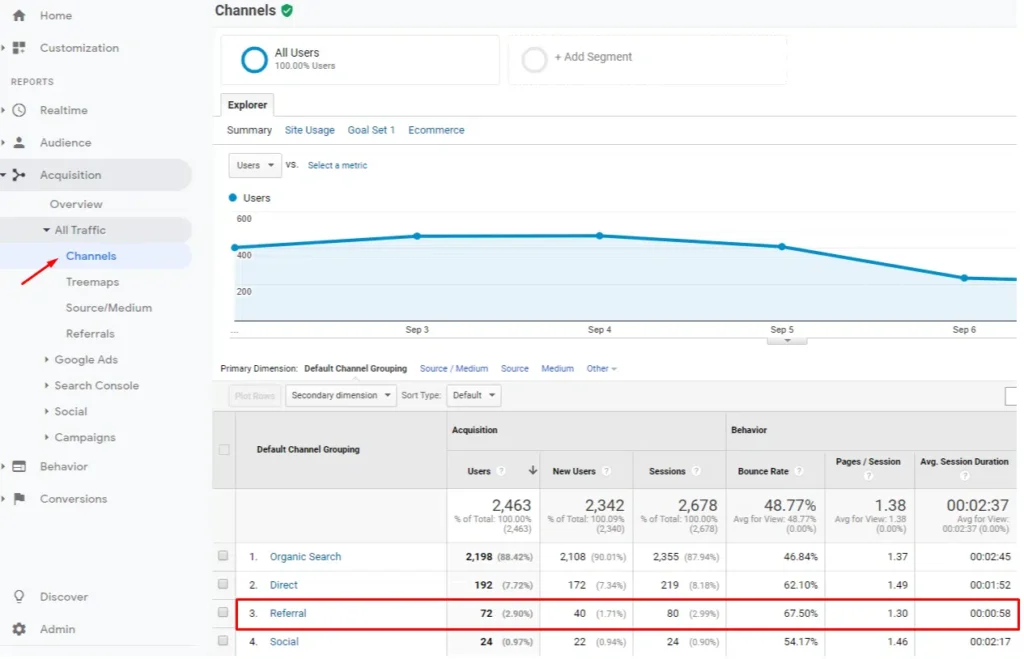
If you want to grow your blog or website, understanding the basics of website traffic is an incredibly crucial skill to master. Without this understanding, you really won’t know who is coming to your site or where they’re coming from.
Think of this lesson as the foundation that you’ll build your entire strategy on. We’ll cover the basics of what website traffic is, why it’s important, the different sources from which it can come, and how to measure and analyze your current traffic to set the stage for growth.
Once you master these core concepts, you’ll be ready to move on to conquering the strategies to actually increasing it.
What is Website Traffic?
Website traffic refers to the number of visitors that land on your website. These visitors can come from various sources and perform different actions on your site, from reading a blog post to making a purchase.
Traffic is a vital indicator of your website’s health and performance. More visitors mean more opportunities to engage with your content, share your ideas, and potentially monetize your platform. It’s also a critical factor in SEO rankings, brand exposure, and online authority.
I’ll dive into the specifics of how to measure website traffic and what it actually means later on, but as a general rule of thumb if your traffic is increasing, that’s what you want to see.

As you can see, the trendline is “up and to the right”. The core principal for my agency, Trendline SEO, “Rise up, the right way.” This is a play on a positive trendline.
Different Sources of Website Traffic
There are many different sources of website traffic that I blog can get. These include:
- Organic Search: Visitors who find your website through a search engine like Google or Bing.
- Direct: Visitors who enter your website URL directly into their browser or search for your brand directly through a search engine.
- Referral: Visitors who come to your site from links on other websites.
- Email Marketing: Visitors who click on a link in an email.
- Social Media: Visitors who find your content through social media platforms.
- Paid Search: Visitors who click on a paid ad to reach your website.
Each has their own benefits and drawbacks. But understanding these sources helps you modify your strategies to target specific types of traffic more effectively.
Most high-output bloggers will usually use a combination of all of the sources together, but typically focus most of their efforts on ranking high-quality content for SEO and then promoting it using email marketing and social media.
After all, earning money though passive income streams is an incredible gift that that internet and technology has provided us with.
Direct and referral traffic are somewhat a byproduct of the standard SEO and content marketing efforts. Other websites will naturally link to your site if they find it helpful, so getting traffic through these channels is a bit more hands-off.
Yes, you can do guest posting campaigns and partnerships, but I personally like to make content that people like to link to organically without much effort on my part once it’s produced.
And lastly, paid search is usually most common in the Ecommerce niche where somebody that wants to directly promote a product. People usually don’t run a PPC campaign unless there’s tangible value that can generate an immediate ROI.
Measuring and Analyzing Your Current Traffic
There are many different ways to measure website traffic, but the most common is Google Analytics. This is a powerful, free tool that can give you insights into your website traffic, including visitor demographics, behavior, and traffic sources.
It can track pretty much anything you need it to track. It’ll give you a high-level overview of your site traffic: Or, let’s say you want to see what the referral traffic to your blog is. It can do that too:

While it’s an incredibly advanced tool that can go super-deep with metrics, most bloggers use it to track users, pageviews, bounce rate, how long readers are on their site, and where that traffic is coming from.
- Sessions and Users: Understand how many visits your site gets and the number of unique visitors.
- Bounce Rate: The percentage of visitors who leave after viewing only one page. A lower bounce rate means more engagement.
- Average Session Duration: How long, on average, visitors stay on your site. Longer durations can indicate more engaging content.
- Traffic Sources: Knowing where your visitors come from helps you understand which marketing efforts are working.
I suggest you check out our How to Use Google Analytics course to learn more about how to actually use the tool. But the main thing to keep in mind is looking for patterns in your traffic data.
Are certain types of content bringing in more visitors? Is there a particular source that’s driving the majority of your traffic? Use this information to refine your content strategy and marketing efforts.
Key Takeaways
Understanding your website’s traffic is foundational to growing your audience. By knowing where your traffic is coming from and how visitors are interacting with your site, you can make informed decisions that boost your traffic and engage your audience more effectively.
In our next lessons, we’ll dive deeper into strategies for increasing traffic from each source.

